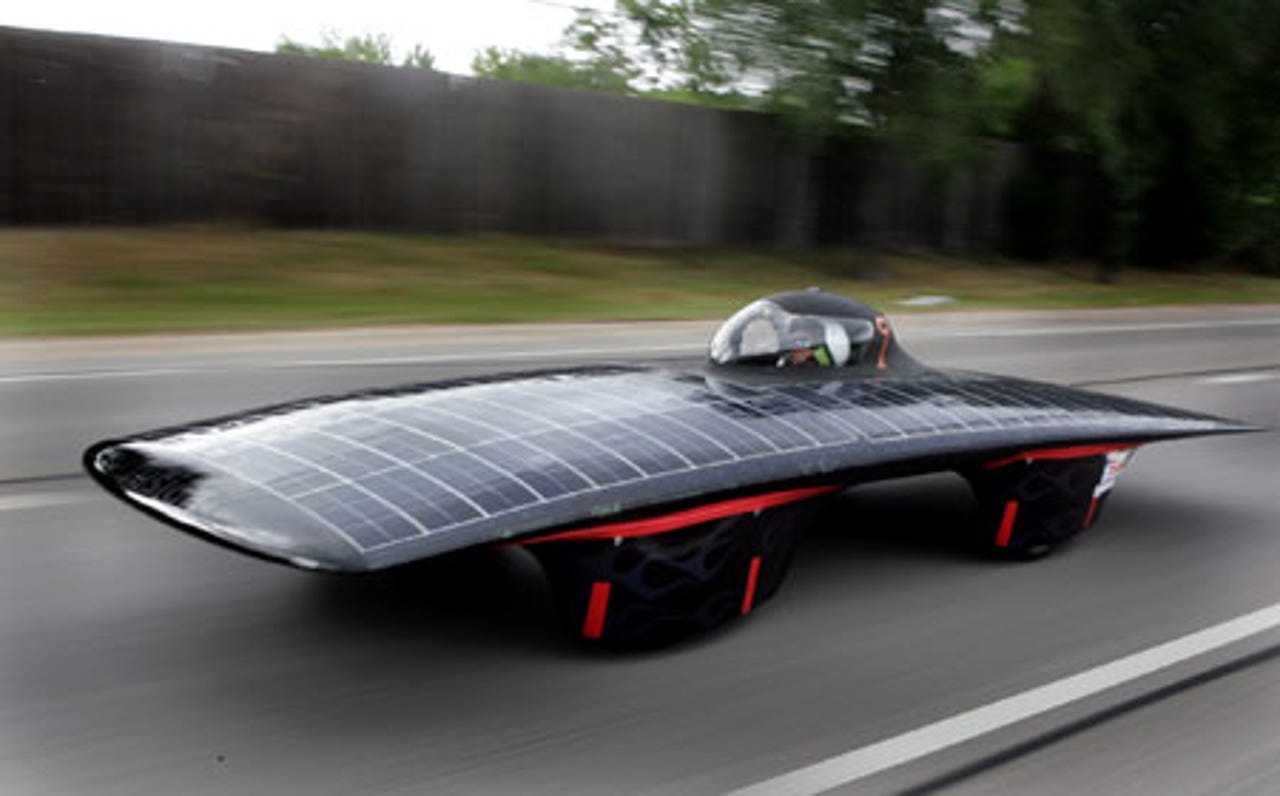Photos: Solar Challenge--2,500 mile car 'rayce'


University of Minnesota Borealis III
Twenty cars started their engines on July 17 and began to "rayce" 2,500 miles from Austin, Texas to Calgary, Alberta in the 2005 North American Solar Challenge. The catch? Each car must be powered only by sunshine.
Top qualifier Borealis III, built by the University of Minnesota Solar Vehicle Project, hits the road for this event run by the North American Solar Challenge.
Defending champions
The U.S. Department of Energy, the main sponsor for this biannual event, seeks to bolster national security by promoting renewable and energy-efficient technologies. This year's course will include "raycing" in Canada for the first time. Here, defending champions from the University of Missouri, Rollo fine tune Solar Miner V prior to the race.
Aerodynamics
To get the most out of limited power and take advantage of aerodynamics, cars are designed to run as low to the ground as possible. Here the University of Minnesota's team driver peers over the hood.
Principia College RA 6
Principia College, a liberal arts college in Elsah, Ill., with approximately 550 students, qualified for the race in RA 6 despite not having an engineering department. Cars can run at highway speeds but speed and distance covered is sometimes determined by the weather.
MIT Tesseract
The MIT Solar Electronic Vehicle team had an unexpected problem while taking Tesseract out for a test ride. According to the team's Web site, a Massachusetts state trooper pulled the car over for not properly displaying its license plates. He also noted several other violations such as no headlights and taillights.
Fill 'er up
In the 2003 race, the car from the University of Western Michigan fills up with solar--while providing a shady spot for the team. The cars use photovoltaic cells to convert sunlight into electricity to power their cars.
Countryside
In the 2003 race, the Kansas State University car travels through the Mojave Desert on Route 66. This year's course follows U.S. Route 75 and the Trans Canadian Highway. Checkpoints are placed along the route and include Broken Arrow, Okla., Fargo, N.D., and Medicine Hat, Alberta.
Taking the top down
The University of Minnesota's Borealis III is inspected with the top down at the 2005 Formula Sun Grand Prix race in Heartland Park, Kan. The team consists of 46 undergraduates who have worked on the project since January 2004.
First steps
Members of the Purdue University team observe their vehicle in the first steps of construction.
Solar panels in place
The final solar panels are placed on the top of Purdue University's SPOT 2.
Wired from the bottom
The solar cells in the Purdue University car are wired on the underside of the car body to provide power to the engine.
The finished product
The hard work pays off as SPOT 2 makes a splash around the Purdue University campus and is ready for "raycing."